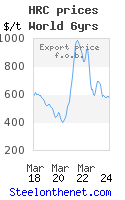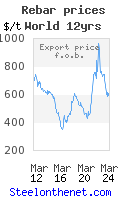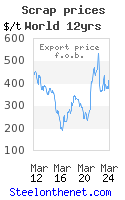Coal Mining in Ukraine [BlackDiamond]
SNEZHNOYE, Ukraine -- Yury still gets shivers down his spine when he remembers how the wooden supports of the mine caved in and he was trapped in the dark, 50 meters below ground.
He could hear his friends desperately digging to get him out, and breathed slowly to save the little oxygen he had left.
"But that was last year, at a different kopanka," Yury said, using the local name for an illegal mine, as he smiled and wiped the sweat from his coal-blackened forehead.
Looking older than his 35 years, Yury said he saw little alternative to joining one of the many groups of miners who illegally dig the dangerous makeshift pits around Snezhnoye, a beat-up town in eastern Ukraine 80 kilometers east of Donetsk.
In the year since President Viktor Yushchenko came to power, the Orange Revolution has not just passed Snezhnoye by. Locals say things here, as in many towns in the Donbass coal field that covers the Donetsk and Luhansk regions, have gotten worse.
Local bureaucrats in the area -- which overwhelmingly supported Yushchenko's opponent in last year's presidential elections, former Prime Minister Viktor Yanukovych -- closed thousands of illegal mines in an effort to avoid a crackdown by the new government in Kiev. While the closures deprived corrupt officials of an extra source of income, for the miners and their families the effect was far worse.
But now, with local bureaucrats regaining confidence, the mines are being reopened.
Despite the dangers associated with illegal mining, thousands of men, women and children, armed only with picks and shovels, are digging for coal again in the woods around Snezhnoye.
The miners say there are about 600 illegal pits around the town where coal can be found as close as 10 meters below the surface. Illegal mines can even be found in vegetable gardens, where whole families are employed. Sometimes, desperate residents dig under the basements of residential buildings, or unseal old mine shafts to extract the coal.
Children as young as 11 work in these pits -- in winter they join their parents after school, while in the summer they work full time.
"I know that what we're doing is against the law, but we're not criminals," Yury said. "We do this dirty work because it's the only way to feed our families. I have a wife, two children and my parents to support. I don't have much choice."
Snezhnoye, which under Stalin was billed as a model coal-mining town, after the Soviet collapse turned into a wasteland of crumbling buildings, rusted industrial equipment and slag heaps. Cars zigzag their way along the streets to avoid the potholes.
Since 1991, about half of the town's population of 100,000 has moved away. Among those who have stayed, the average age is rising and the official unemployment rate is close to 50 percent.
In the painful transition to capitalism, Ukraine got two loans from the World Bank to reform its inefficient mining industry. The loans were intended to help the country cope with the closure of loss-making mines and create new jobs for former miners.
The reform, however, was stillborn. All but one of Snezhnoye's 11 coal mines were shut down, but the government failed to come up with the new jobs.
"The money allocated for creating jobs ended up in the pockets of the bureaucrats in charge of the restructuring and the directors of the state-owned mines," said Svetlana Samoilyuk, an expert with the Association of the Donbass Mining Cities, a nonprofit lobby group. "As a result, today we see that many mines are closed, but people were not given any alternative.
"To survive, miners are forced to mine illegally. This is what we got after the restructuring of the coal sector in Ukraine. It's simply outrageous," Samoilyuk said.
In Soviet times, the miners of the Donetsk region were acclaimed as heroes and seen as epitomizing the backbone of the country's industrial might. Miners received better-than-average salaries, and families could afford summer vacations in Crimea.
The mines financed local schools, and children from Snezhnoye would often win national musical or ballet competitions. But with the mines shut and no money in the town's budget, the schools are struggling to survive, while restaurants and shops have closed due to lack of business.
"I have little hope that life can get better for my children," said Yury, himself the son of a miner.
Like other miners interviewed for this article, Yury refused to give his last name for fear of reprisals. After an article was published in the press a few years ago, some local miners had problems with the police, the miners said.
While those working the illegal mines can earn between $300 and $400 per month, the lion's share of the profits ends up in the pockets of the police and local mafia groups through protection rackets, said Mykhailo Volynets, the head of the country's Confederation of Trade Unions and a member of the parliament's energy committee.
According to Volynets, there are about 6,000 illegal mines in the Donbass coal field, producing 3 million tons of coal per year, worth $18 million.
The coal sells for between $50 and $60 per ton, Volynets said, of which the miners see only $10 to $20.
The coal is usually bought by state-owned mines and sold abroad at market prices, with the difference being pocketed by the local business clans who control the mines, Volynets said.
Officially, the country's state-owned mines produce 75 million of tons of coal per year.
In the woods outside Snezhnoye, Yury was working on a 100-meter-deep pit with two friends, Sergei and Oleg.
The only light in the pit came from the lamps on their rusty helmets, and the roof supports, which covered only about 30 meters, looked rotten.
The supports are often reused for a new pit when an old one has been exhausted, they said.
A heap of black earth 40 meters from the surface was the result of a recent collapse. Beyond 50 meters down, the air becomes stale and the only source of oxygen the miners have is that produced by the pneumatic drill they use to extract the coal.
"I know that safety is not the best in our pit, but the official mines are not much better," Sergei said. "People die like flies there."
After China, Ukraine has the most dangerous mines in the world. Since 1991, about 4,300 miners have been killed in accidents, according to official statistics. Accidents are also commonplace in the illegal mines, for which no official figures are kept.
"If someone dies in the kopanki, the police just say it's from natural causes," Volynets said.
Earlier this month, the miners said, a local woman died when the roof of an illegal mine she was working on caved in.
Not far from Yury's mine, Svetlana; her husband, Igor; and her father-in-law, Vladimir, have just finished digging a pit 40 meters deep. It is the first they have dug since Yushchenko's election last December, they said.
"With the new authorities, all the illegal pits were bulldozed -- it's been a rough year," said Svetlana, 45, as she fixed wooden supports. "We could only afford to eat potatoes."
But now, she said, the authorities have eased up on illegal mining and everyone in Snezhnoye is working their old pits again.
Oleg Grishin, an analyst with the Donetsk-based Ukrainian Center for Independent Political Research, said that when Yushchenko was elected, local bureaucrats were afraid Kiev would start investigating shady businesses in the area and decided to shut all the illegal pits.
"Now, everyone realizes the new authorities aren't much different from the old ones. Our bureaucrats are back in the saddle again, and they know no one in Kiev will punish them for protecting this illegal business," he said.
Many Snezhnoye residents hope that with the pits in business again, there will be more money in town.
"When the pits are open, people buy more computers," said Lyudmila, the owner of a small store that sells electronic goods.
"I'm happy they've started digging again.
blogger@steelonthenet.com
He could hear his friends desperately digging to get him out, and breathed slowly to save the little oxygen he had left.
"But that was last year, at a different kopanka," Yury said, using the local name for an illegal mine, as he smiled and wiped the sweat from his coal-blackened forehead.
Looking older than his 35 years, Yury said he saw little alternative to joining one of the many groups of miners who illegally dig the dangerous makeshift pits around Snezhnoye, a beat-up town in eastern Ukraine 80 kilometers east of Donetsk.
In the year since President Viktor Yushchenko came to power, the Orange Revolution has not just passed Snezhnoye by. Locals say things here, as in many towns in the Donbass coal field that covers the Donetsk and Luhansk regions, have gotten worse.
Local bureaucrats in the area -- which overwhelmingly supported Yushchenko's opponent in last year's presidential elections, former Prime Minister Viktor Yanukovych -- closed thousands of illegal mines in an effort to avoid a crackdown by the new government in Kiev. While the closures deprived corrupt officials of an extra source of income, for the miners and their families the effect was far worse.
But now, with local bureaucrats regaining confidence, the mines are being reopened.
Despite the dangers associated with illegal mining, thousands of men, women and children, armed only with picks and shovels, are digging for coal again in the woods around Snezhnoye.
The miners say there are about 600 illegal pits around the town where coal can be found as close as 10 meters below the surface. Illegal mines can even be found in vegetable gardens, where whole families are employed. Sometimes, desperate residents dig under the basements of residential buildings, or unseal old mine shafts to extract the coal.
Children as young as 11 work in these pits -- in winter they join their parents after school, while in the summer they work full time.
"I know that what we're doing is against the law, but we're not criminals," Yury said. "We do this dirty work because it's the only way to feed our families. I have a wife, two children and my parents to support. I don't have much choice."
Snezhnoye, which under Stalin was billed as a model coal-mining town, after the Soviet collapse turned into a wasteland of crumbling buildings, rusted industrial equipment and slag heaps. Cars zigzag their way along the streets to avoid the potholes.
Since 1991, about half of the town's population of 100,000 has moved away. Among those who have stayed, the average age is rising and the official unemployment rate is close to 50 percent.
In the painful transition to capitalism, Ukraine got two loans from the World Bank to reform its inefficient mining industry. The loans were intended to help the country cope with the closure of loss-making mines and create new jobs for former miners.
The reform, however, was stillborn. All but one of Snezhnoye's 11 coal mines were shut down, but the government failed to come up with the new jobs.
"The money allocated for creating jobs ended up in the pockets of the bureaucrats in charge of the restructuring and the directors of the state-owned mines," said Svetlana Samoilyuk, an expert with the Association of the Donbass Mining Cities, a nonprofit lobby group. "As a result, today we see that many mines are closed, but people were not given any alternative.
"To survive, miners are forced to mine illegally. This is what we got after the restructuring of the coal sector in Ukraine. It's simply outrageous," Samoilyuk said.
In Soviet times, the miners of the Donetsk region were acclaimed as heroes and seen as epitomizing the backbone of the country's industrial might. Miners received better-than-average salaries, and families could afford summer vacations in Crimea.
The mines financed local schools, and children from Snezhnoye would often win national musical or ballet competitions. But with the mines shut and no money in the town's budget, the schools are struggling to survive, while restaurants and shops have closed due to lack of business.
"I have little hope that life can get better for my children," said Yury, himself the son of a miner.
Like other miners interviewed for this article, Yury refused to give his last name for fear of reprisals. After an article was published in the press a few years ago, some local miners had problems with the police, the miners said.
While those working the illegal mines can earn between $300 and $400 per month, the lion's share of the profits ends up in the pockets of the police and local mafia groups through protection rackets, said Mykhailo Volynets, the head of the country's Confederation of Trade Unions and a member of the parliament's energy committee.
According to Volynets, there are about 6,000 illegal mines in the Donbass coal field, producing 3 million tons of coal per year, worth $18 million.
The coal sells for between $50 and $60 per ton, Volynets said, of which the miners see only $10 to $20.
The coal is usually bought by state-owned mines and sold abroad at market prices, with the difference being pocketed by the local business clans who control the mines, Volynets said.
Officially, the country's state-owned mines produce 75 million of tons of coal per year.
In the woods outside Snezhnoye, Yury was working on a 100-meter-deep pit with two friends, Sergei and Oleg.
The only light in the pit came from the lamps on their rusty helmets, and the roof supports, which covered only about 30 meters, looked rotten.
The supports are often reused for a new pit when an old one has been exhausted, they said.
A heap of black earth 40 meters from the surface was the result of a recent collapse. Beyond 50 meters down, the air becomes stale and the only source of oxygen the miners have is that produced by the pneumatic drill they use to extract the coal.
"I know that safety is not the best in our pit, but the official mines are not much better," Sergei said. "People die like flies there."
After China, Ukraine has the most dangerous mines in the world. Since 1991, about 4,300 miners have been killed in accidents, according to official statistics. Accidents are also commonplace in the illegal mines, for which no official figures are kept.
"If someone dies in the kopanki, the police just say it's from natural causes," Volynets said.
Earlier this month, the miners said, a local woman died when the roof of an illegal mine she was working on caved in.
Not far from Yury's mine, Svetlana; her husband, Igor; and her father-in-law, Vladimir, have just finished digging a pit 40 meters deep. It is the first they have dug since Yushchenko's election last December, they said.
"With the new authorities, all the illegal pits were bulldozed -- it's been a rough year," said Svetlana, 45, as she fixed wooden supports. "We could only afford to eat potatoes."
But now, she said, the authorities have eased up on illegal mining and everyone in Snezhnoye is working their old pits again.
Oleg Grishin, an analyst with the Donetsk-based Ukrainian Center for Independent Political Research, said that when Yushchenko was elected, local bureaucrats were afraid Kiev would start investigating shady businesses in the area and decided to shut all the illegal pits.
"Now, everyone realizes the new authorities aren't much different from the old ones. Our bureaucrats are back in the saddle again, and they know no one in Kiev will punish them for protecting this illegal business," he said.
Many Snezhnoye residents hope that with the pits in business again, there will be more money in town.
"When the pits are open, people buy more computers," said Lyudmila, the owner of a small store that sells electronic goods.
"I'm happy they've started digging again.
blogger@steelonthenet.com




0 Comments:
Post a Comment
<< Home